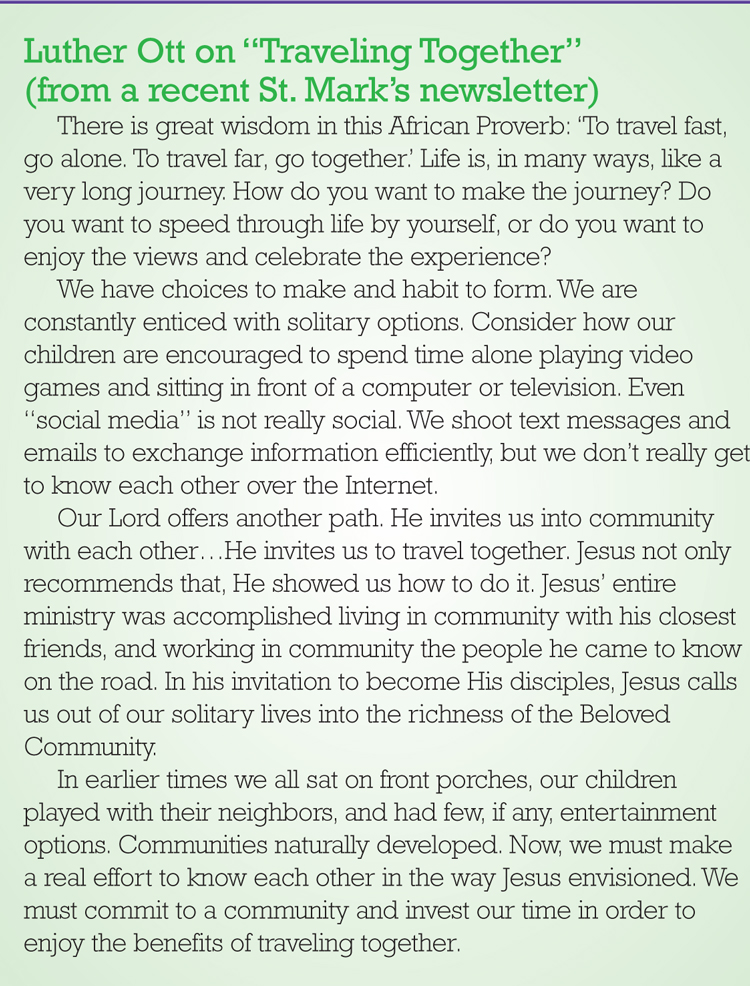By MARILYN TINNIN
His resume is one big collage of black type—he has done so many things over the years. To see Luther Ott on paper is to be a little intimidated by someone who is incredibly multitalented. The attorney, cattle rancher, former CEO of two local non-profits, community volunteer and Episcopal priest is the recipient of so many awards entitled “distinguished” something or other, that one wonders if he ever sleeps. He is indeed part saint and part rock star, a consummate renaissance man, who genuinely loves other people and whose calling in life is to use whatever talents and resources he has to make his city and state a better place. That purpose fuels his relentless energy. To his six grandchildren, he is “Poppy,” and he is likely even more passionate about that role than all the others he has filled over the years.
The second of four boys, Luther spent most of his growing up years in Hattiesburg. His very wise mother decided Boy Scouts would be a worthwhile activity for her sons, and as Luther says, “She kept the goal of Eagle Scout in front of us all the time. If we had any spare time at all, we were working on merit badges or doing yard work.” It was Troop 3’s scoutmaster, Harry Moore, who had a profound influence on Luther as a boy. It was under Moore’s tutelage and through his example the great heart for service took root in Luther.
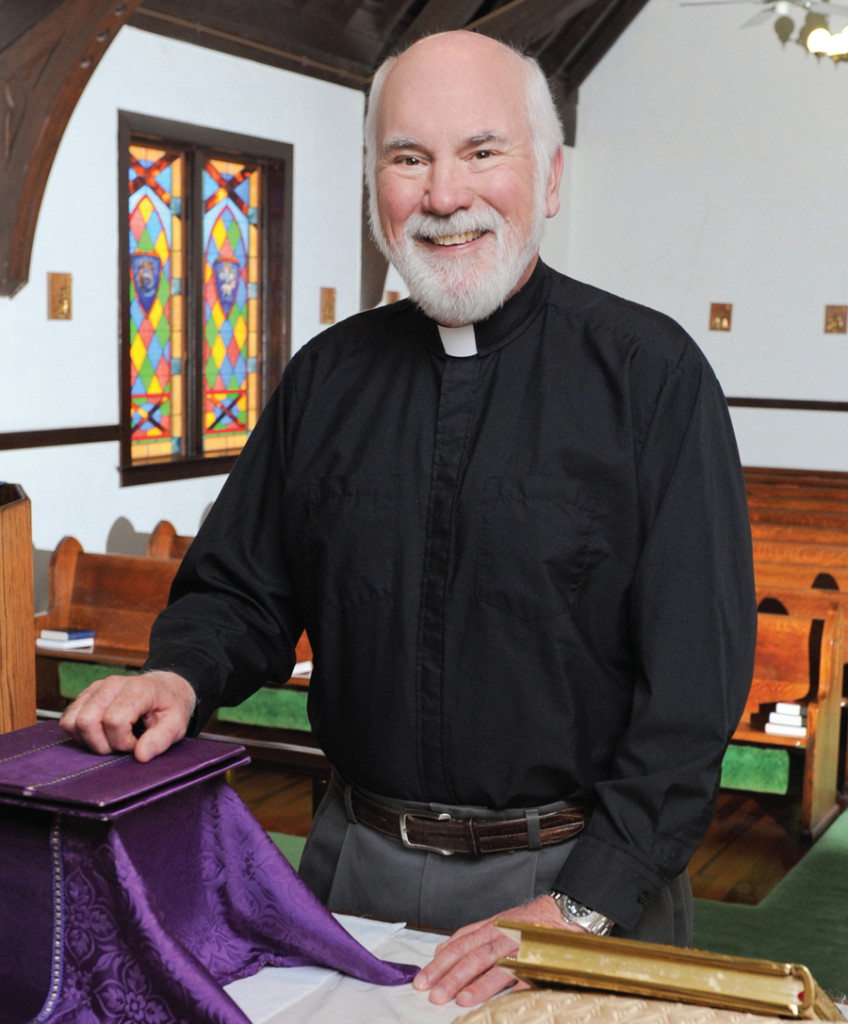 Luther graduated from Hattiesburg High School in 1967 and headed to Millsaps on a football scholarship. He thought he wanted to teach history and coach football eventually, but his father suggested that he take the LSAT and if he did well enough, go on to law school. As Luther explains, “I guess my genetics predisposed me to that profession. My father and both of my grandfathers were lawyers. I really did not think a lot about it because as my dad told me, if I did not like law, I could still go coach football and teach history.”
Luther graduated from Hattiesburg High School in 1967 and headed to Millsaps on a football scholarship. He thought he wanted to teach history and coach football eventually, but his father suggested that he take the LSAT and if he did well enough, go on to law school. As Luther explains, “I guess my genetics predisposed me to that profession. My father and both of my grandfathers were lawyers. I really did not think a lot about it because as my dad told me, if I did not like law, I could still go coach football and teach history.”
That thoughtful, easy going, glass-half-full disposition is evident today. He says he has enjoyed every job he has ever had! And those who have worked with him will testify that he gives his all to whatever he does. He confesses that he actually did much better in law school at Ole Miss than he had done during his four years of college at Millsaps. He attributes the difference in his GPAs to the fact that he had a “really great time” during college. A little maturity never hurt.
Careers and Callings
Despite the fact that he gave very little cerebral soul searching to his career path after college, he discovered that he loved practicing law. He “loved” starting a law firm and his innate love of people meant he developed long-lasting relationships with his clients. Even in the first years after he graduated from seminary, he served several church positions while continuing to be managing partner in his law firm.
And he was very good at it. For a while, he managed to multitask quite well.
There was no negative event that drove him away from practicing law. Neither was there any “Saul-on-the-road-to-Damascus event” that sent him to seminary.
So what was it? What would cause a very successful attorney to leave his practice for three years in order to attend seminary and become a priest? It’s a long story which Luther calls a “journey.”
It was during his college years at Millsaps that he woke up to the reality of racism—that it really existed and it existed in the state of Mississippi he loved. Until that time, he describes his normal environment as a “protected” segregated culture. He simply had never had a friendship with a person of another race. He had attended segregated schools his entire life, had no reason to dislike a person of another race, but like many of his baby boomer brethren, he simply had not given race relations much thought one way or the other.
At Millsaps in 1967 he was forced to think critically about the controversial issues of the day, and as he says, “Truth-telling caused a rapid transformation in my thinking and my personal commitments.” When he and college sweetheart Janet Sanderson married, they were in sync when it came to being intentional about helping change the culture that had kept the races apart for centuries. Nobody could call them “rabble rousers,” which was a common term in that era. They were loved and respected by the status quo, but they were conscious and passionate about building bridges, healing past hurts, and doing the hard work called reconciliation. And for them, it was not all talk—it was up close and personal.
Luther was a lifelong Methodist and Janet a lifelong Episcopalian when they married. It was not until 1976, several years into marriage, that they became involved as a couple in the same church. They joined St. James Episcopal Church in Jackson.
The race issue was much on both their minds at the time, and Luther says, “We made some feeble attempts to get some of our African American friends to go to church with us, but we never got any traction there.” One day they looked at each other and said, “Why don’t we go to a black church?” This was in the 1980s, and it was on both their hearts to desegregate Sunday morning—which had long been known as the most segregated hour of the week.
And so they did, although Luther says there were many like minds trying to do the same thing by that time. It was to the historic St. Mark’s on West Pearl Street near Jackson State Janet and Luther went. At the time they had begun keeping foster children. Frequently the children were African American and although they knew a lot about just loving kids and providing a stable home, they discovered a lot of practical issues they had no idea about managing – like how to care for African American hair and skin. It was different. The friends they met at St. Mark’s welcomed them with open arms and filled in all the gaps when it came to the foster children!
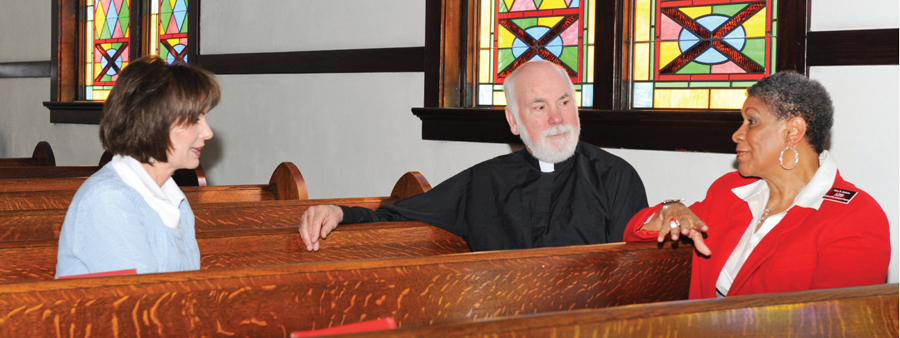
Senior Warden Mary Jackson (right) has been a lifelong member at St. Mark’s. Her love for the parish and the people run deep.
Their Christlike love for other people kept moving them toward greater and greater commitment to the whole idea of racial reconciliation in Mississippi. Janet, who at that time was an eighth-grade science teacher at St. Andrews school, became involved with Stewpot in the heart of a deteriorating area of the capital city. She started a summer program for the inner city kids who lived close by. One thing led to another as Luther and Janet became more and more aware and more and more involved in the plight of the poor and the racial divide that existed right there in their back yard.
Whose voices could be more effective than two who had grown up in the segregated system and, with a great understanding of all the complexities of the culture, were willing to do the hard things necessary to unite the races? They felt totally—even radically—called to doing whatever they could do to improve race relations in Mississippi.
They took a leap of faith when, in 1993, they left Jackson to attend the Episcopal Divinity School in Cambridge, Massachusetts. Maybe as clergy, they would have a bigger voice and a greater influence for change.
And Then…
When Luther and Janet returned to Jackson in 1996, they wasted no time engaging. Luther continued to manage his law firm while he filled the role as curate of St. Phillip’s Episcopal Church in Jackson. At first, he could keep all the balls in the air as Managing Partner of his law firm and a part-time priest!

Buster Ott, “the best Lab in the world.”
A year later he accepted the position as Executive Director at Stewpot, a task that put him into constant contact with an array of broken individuals and enormous need. It was a thorough education in the side of life he had never fathomed before he felt that tug on his heart to move beyond the safe and protected culture he had known before 1967. Even then, he managed the law practice and Stewpot.
It was not until he accepted the fulltime position as priest at The Church of the Creator in Clinton that he came to a place he had to lay down the sheepskin and devote himself to the pastorate. As Luther says, “I knew I had to do that in order to be fair to the people who had asked me to serve. In fulltime ministry, everybody in your parish has the right to expect you to be on call. I realized then I could not be in control enough of my schedule to do all that I was doing.”
Following his years at The Church of the Creator, Luther spent more than 10 years guiding the Community Foundation of Greater Jackson. That charitable foundation’s mission is to help non-profit organizations grow their endowments as well as connect “givers” with non-profits who reflect their philanthropic interests. Strategically the Community Foundation has the opportunity to maximize the generosity of those who give. Such a position seemed to be an education in itself for Luther’s sincere passion to understand the big picture and the intersections between poverty, race, needs, and solutions that are real and transformative.
When Luther took the reins at the Community Foundation, it was shortly before the Great Recession of 2008. All non-profit groups were suffering. Luther, “Mr. Glass Half Full,” saw the entire debacle as “a wonderful challenge,” as he and his cohorts put all of their creative skills together to figure out how to navigate the economic downturn, give their donors value for their investment, and maintain the enthusiasm and commitment to the mission of the Foundation.
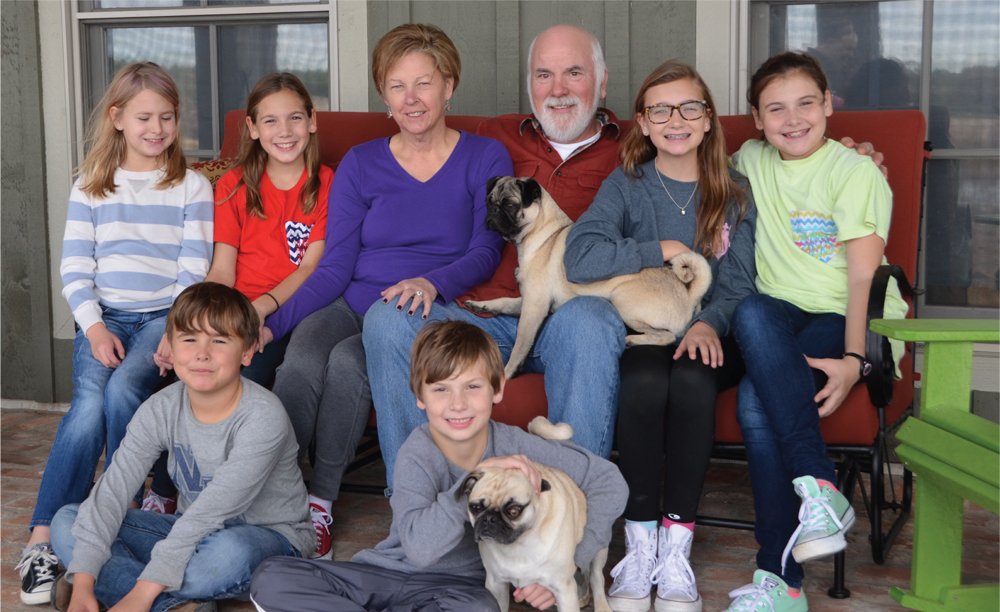
Luther and Janet relax at the farm with their six grandchildren and two of their favorite canine friends. Back: Eliza Beckett, Alli Grace Ott, Nana, Poppy with Buddy, Abby Ott, Jordan Ott. Front: Thomas Beckett, Luke Ott and Fritz.
When he stepped down from that position, he thought he might just retire to the farm he and Janet had bought years earlier. It started as a “grandchildren magnet” Luther explains but with time became something else.
When they bought it, it was a working cattle ranch. Thinking they would never raise cattle, Luther and his son spent untold hours removing the cattle gaps and the entire infrastructure they were not going to need since they were going to be a hay farm.
A few years later and a few gazillion cattle later—they spent untold hours and dollars putting everything back! One thing you can say for Luther Ott. He never says never. (Be sure tocheck out Ottfarms.com)
And now…
At Saint Mark’s a few blocks from Jackson State University, where Luther is now serving as interim priest, no one in the pulpit or in the pew is in a hurry to see him go. One wonders if they are really looking very hard for a replacement! On a recent day when I visited with Luther and two of his “right arm” parishioners, I got a real appreciation of the church’s history and its role in being a consistent image of Christ’s love in the community.
Senior Warden Mary Jackson has been a part of St. Mark’s all of her life. As a retired math teacher in the Jackson public schools, she has seen the neighborhood change drastically but is seeing some revitalization now. She well remembers February 2, 1970, when the court ordered busing dismantled the Jackson Public Schools and there was fear and distrust among the whites and blacks. She was moved from Lanier High School where she had taught for years to Murrah High School in very white north Jackson. She has a great story. Her faith and character shine through. (You can read the transcript of a 1978 interview with her at bit.ly/MDAHMaryJackson.)
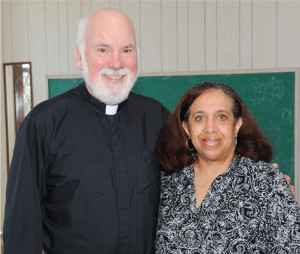
Mary Williams, affectionately called “Peaches,” is the church administrator and also a lifelong member of St. Mark’s.
Mary Williams, who is affectionately called “Peaches” by her close friends, is the church administrator. She keeps Luther straight, tends to all the administrative things that only a gifted person can do, and is something like the CEO of St. Mark’s. She, like Mary Jackson, has been at St. Mark’s all her life.
The church was founded in 1883. In the 1950s, in the era of “separate but equal” schools, which as Luther says, “were separate but profoundly unequal,” there was a group of St. Mark’s parents who wanted their children to have a quality education and they worked hard to provide a school. The St. Mark’s school, from 1911 until 1955 did indeed provide a stellar education for its children. Both Mary and Peaches are grateful graduates of St. Mark’s. When St. Mark’s graduates transitioned to public school after eighth grade, the test scores of those fortunate schools immediately went up!
Mary, Peaches, and Luther gave me just a preview of their vision for the future. There is no crying about the way things used to be. There is a pragmatic and heartfelt realization of the area that is gone and the area where there are still homes and adults and children and many are not churched at all. Luther says, and the church agrees, “It is going to be up to us to go out and let people know there is a place for them here.”
Mary adds, “We are very conscious now of being open to all who will come.” Sounds like something very first century—very gospel.
There is a real desire to reach out to the community and to create and nourish a Christian community within this community.
As Luther says, with a twinkle in his eye, “Preach the gospel always—when necessary, use words.”
Profound idea.
